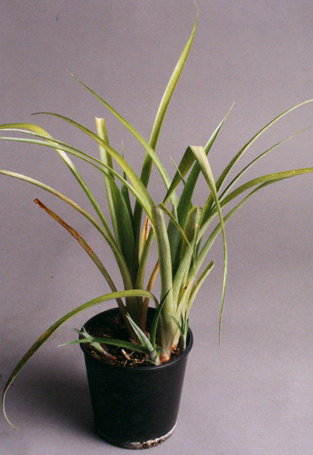A
catalogue of Bromeliads used for various projects by - © Lloyd Godman
This
is a catalogue of bromeliads used by Lloyd godman for his various installations
and photosynthesis projects - the collection of pants he accessed in
New Zealand from 1996 - 2004 was collected from a wide range of sources,
while most were brought from Greens Bromeliads, some were also donated
by the Dunedin Botanical Gardens. Later in 2004 these plants were either
sold or given away with his move to Australia.
Lloyd is at present re-establishing his collection where he now lives
in Melbourne.
A
Lexicon of Bromeliads: A
resource by Lloyd Godman
Blthough Billbergias produce flowers that are shot lived, they are very spectacular. These very hardy plants often have few leaves but they form in such a manner as to produce tall tubular structu res that hold deep reservoirs of water. These leaves are often dusted with silver bands, or the plant may take on an over all silver dusting. They like average to warm temperatures (60-85 degrees C, 16-30 degrees F), but some will tolerate temperatures near freezing for short periods. Many grow well as epiphytes on trees.
Plants are marked NZ for those collected in New Zealand - or Aust - for the new plants collected since coming to Australia
|
Billbergia nutans
(Nodding referring to the inflorescence)
Queens tears or the friendship plant
|
|
|




detail of Billbergia nutans flower
|
Species/Cultivar:
Seed parent plant:
Pollen Parent Plant:
Taxonomic rank:
Hybridizer:
Native distribution: This terrestrial or epiphytic Billgergia is found growing low in trees in forests of Brazil, Argentina and Uruguay at elevations of 2,300 to 3,000 feet
Habit: . It was one of the first bromeliads to be grown in California, and is known as the "friendship plant" because it is easy to pass on to a visiting friend by breaking of a young pup. The plant is an easy grower and in no time at all, it will form a large clump. The leaves are mostly narrow, gracefully recurving, sword-shaped leaves, 8 to 12 inches long, are olive green but turn reddish in bright sunlight.
Collection: NZ & Aust
|
|